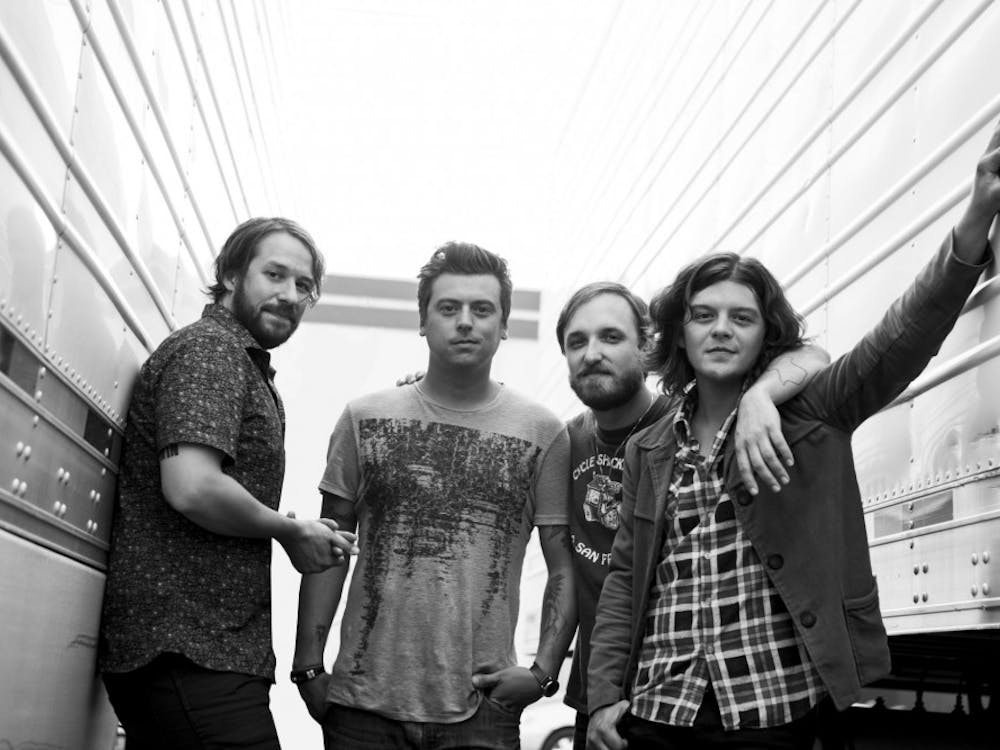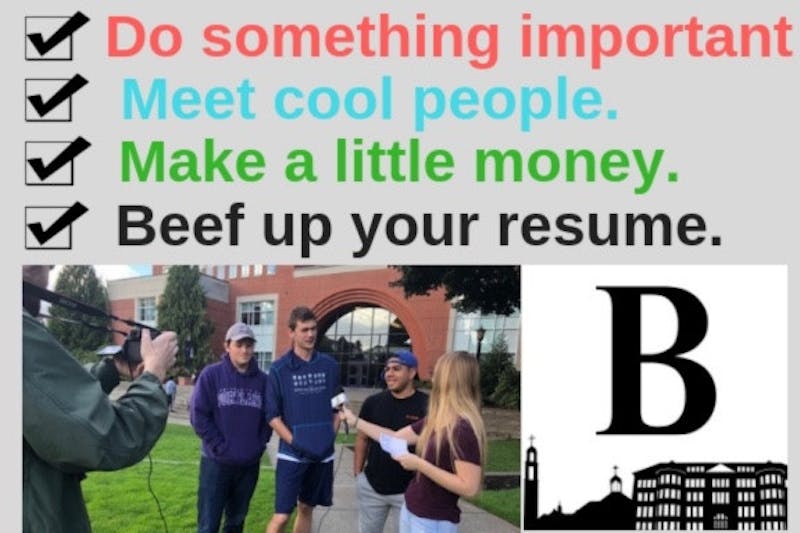ASUP events more popular then ever - except Senate meetings
By Emily Sitton
A student dressed in a tie-dye shirt, headband and bell-bottoms struts onto the jam-packed Crystal Ballroom's dance floor.
She tries to dance to "Bad Romance," but can hardly lift her arms without hitting someone else.
With 100 more students attending than the year before, this year's Dance of the Decades was the fullest it's been in recent years.
This year's Homecoming Dance was three tickets away from selling out, according to senior Tarra McCurdy, the Campus Program Board director.
While student participation in some ASUP-sponsored and funded events has increased in recent years, they haven't always been well attended.
Voter turnout has been recorded only since 2003, but examples of student apathy in ASUP-sponsored events and programs date back to the beginning of ASUP.
During the 1960s and early 70s, the percentage of students who participated in campus affairs was "relatively small" for the number of students attending UP, according to "A Point of Pride: The University of Portland Story" by James T. Covert.
In 1988, for example, ASUP sponsored an open forum for students to discuss issues with Executive Board members.
Twenty-eight people attended, but by the end of the forum, half of them had left.
In a Dec. 1, 1977 issue of The Beacon, staff writer Phil Akers wrote about an ASUP-sponsored snow day at Mt. Hood that "may be junked" if student interest doesn't increase.
In 1989, a CPB-sponsored concert by the Sistine Chapel Choir lost $13,025 because of low ticket sales.
Student interest in ASUP-funded events has skyrocketed in the last few years, despite apathetic student attitudes in the past.
"Events across the board have done really well this year," said senior Alyssa Schmidt-Carr, ASUP vice president.
Every excursion, whether to a play or a Winter Hawks' game, has filled up, according to ASUP adviser Jeromy Koffler.
"Participation used to go up and down, but in the last couple of years, it doesn't matter what we plan," Koffler said.
ASUP members are unsure why there has been a recent rise in participation.
"We don't know if that's because of us or not," Schmidt-Carr said.
Koffler thinks that participation changes may be due to the greater enrollment, but could be due to increased interest.
ASUP President Colton Coughlin, senior, attributes the increase to most students' low budgets.
"I think that people are just choosing to get involved because most are free," Coughlin said.
McCurdy attributes the participation increase to Facebook.
She uses it to advertise events and let students have a voice.
Students can vote for the weekly CPB movies and give input about what music they want at dances as part of the CPB Facebook group.
Senior Jared Walker joined the group in order to be informed about what's happening on campus.
"The Facebook group is a really effective means to communicate," Walker said.
Apathy at UP has decreased in recent years as students are taking more of an interest in dances, excursions, coffee houses and on-campus movies.
However, attendance at ASUP meetings, unless it is a budget meeting, has continued to be low.
No students come to meetings other than a Beacon reporter and the occasional club leader who is making a money request, according to junior Colin Dorwart, senator and ASUP president-elect.
"Overall student attendance (at meetings) has remained the same - not that heavily attended," Dorwart said.
Sophomore class Senator Chloe Ruffin said, "People who aren't senators don't come to Senate meetings unless they want something."
The meetings are open to all students, but many don't attend even though it would be beneficial because students could be informed or voice their opinions to the speakers who come to speak at Senate, Ruffin said.
Schmidt-Carr is unsure why students don't come to meetings. Maybe they don't realize it's an open meeting or maybe they don't know what ASUP is about, she said.
Sophomore Tina Schicchi has never gone to an ASUP meeting.
"If I was invited, I would go, but I probably wouldn't go on my own," she said.
Schicchi said she isn't sure where the meetings are and doesn't know what happens at the meetings.
She thinks that more students might come if they received face-to-face invitations.
Walker said, "I have never felt the need to. That's why we have senators."
While Walker hasn't gone to an ASUP meeting, he plans to go to next week's budget meeting as a club representative.
"I think the budget process is the number one way we get participation," Ruffin said.
Dorwart said that attendance at budget meetings has risen during his three years on ASUP.
"My first year as a senator we would have maybe three clubs represented at a budget meeting, but now we have maybe anywhere from 15 to 20 different clubs represented and sometimes with a number of people there." he said.
Vice-President-elect junior Katie Scally and president-elect Dorwart have plans to strengthen awareness and participation in ASUP-sponsored events.
In addition to office hours, they plan on having ASUP members present at Espresso UP, athletic games and other campus events. Dorwart is also working with KDUP to broadcast interviews with ASUP members.
He believes the most important way to increase participation is by pumping up school spirit.
Dorwart and Scally hope to build a strong connection with the Athletics Department to bring more students to events and escalate awareness of ASUP by hosting a tailgate or barbeque before games.
They hope that increased awareness will help increase student participation as well.
Scally hopes to have town hall style meetings that are open to all students to brainstorm ideas for the Capital Improvements Fund.
"It's great we've got senators to talk about this, but at the end of the day, senators can only talk to so many people," Scally said. "The more voices, the better."
While Scally hopes for more student participation, she also harbors doubts.
"That's always the question: Who will actually come to the event?" she said.
Grab a copy of next week's issue for a look into ASUP's election triumphs and troubles.







